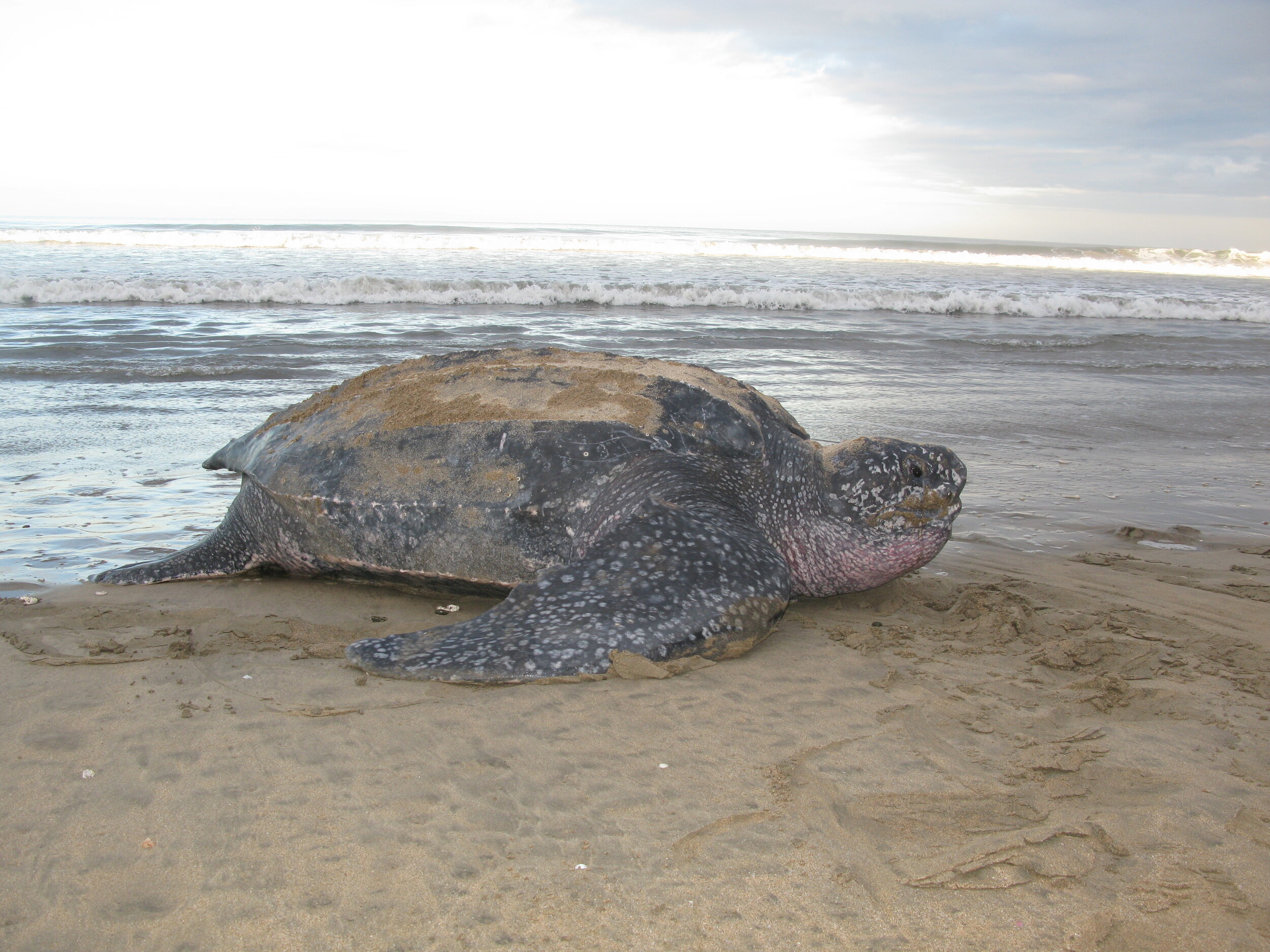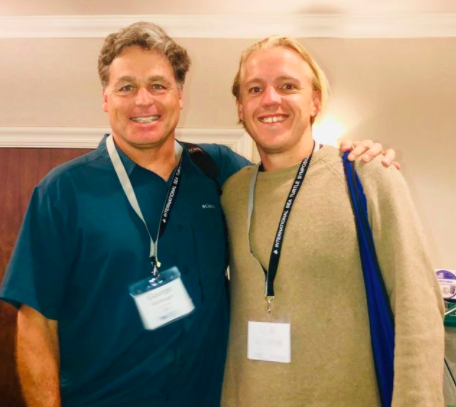Dr. Sean Williamson conducts research to improve the odds for leatherback hatchlings. He has a PhD in Biology on the ecophysiology of embryonic development in turtles and crocodiles from Monash University in Melbourne, Australia. Sean’s current work with Upwell focuses on building consensus among scientists on efforts to decrease East Pacific leatherback hatchling mortality. He has also collaborated with Upwell scientists to research leatherback turtle hatchling dispersal from Pacuare Nature Reserve in Costa Rica.
Leatherback turtles are prehistoric giants that roam the depths of our oceans. They are unique amongst the seven species of sea turtle in that they are not hard shelled. Leatherbacks are the biggest, deepest diving turtle and the only species to persist solely off eating jellyfish. Imagine being the size of a small car, weighing over 500 kgs or 1100 pounds, and having to get your fix off eating only jellyfish!
Unfortunately, the reason I’m writing this blog post is because leatherbacks are in deep trouble in the Eastern Pacific. What was once a healthy population of tens of thousands of individuals has been reduced to fewer than a thousand, meaning the population is critically endangered. Sadly, this decline has been caused by human activities, and without interventions the population will likely be extinct by 2080.
Photo by George Shillinger
Over a few decades during the last century, humans collected most leatherback eggs for consumption along the Pacific Coast from Mexico to Ecuador, which led to a huge population crash. Thankfully, the egg harvests have largely been stopped at the major nesting beaches in Mexico and Costa Rica and better nesting beach protections are now in place. But, the threats don’t stop at nesting beaches, leatherbacks still face many perils out at sea.
To add salt to the wound, juvenile and adult leatherback turtles are caught at unsustainable rates in the fisheries operating in their foraging grounds. Often when fishers unintentionally catch these animals as bycatch they are unable to release them alive. The turtles’ migratory and foraging areas are expansive and cover large swathes of the Eastern Pacific, from waters off Mexico south to Chile and east out past the Galapagos Islands.
Concerned scientists, conservationists, and managers gathered in 2012 to discuss ways to stop the extinction of East Pacific leatherbacks; they formed a regional network called Laúd OPO in 2015. The Laúd is a Spanish chordophone with a shape akin to a leatherback’s carapace. This network has developed an Action Plan to address the two main threats to East Pacific leatherbacks: fisheries bycatch and egg loss or reduced hatchling recruitment at nesting beaches. The plan details excellent strategies to reduce these threats to the population by working with fishers and communities along the nesting beaches. However, the situation for the East Pacific leatherbacks has yet to improve, and there are concerns about our ability to address these threats quickly enough to prevent extinction.
With the Upwell team and other collaborators, I’m currently working on a project to evaluate the potential for active recovery techniques complementary to the goals of Laúd OPO. Such options could include egg translocations from other more robust leatherback populations to Eastern Pacific nesting beaches or possibly even captive rearing hatchling turtles to increase survival rates beyond those in the wild. Conservationists sometimes use the term “headstarting” to describe the rearing of an animal or plant in captivity until its subsequent release into the wild. This strategy is usually employed at an early stage of the organism’s life to avoid predation or reduce competition pressures.
While a variety of active recovery techniques have been used to save other species from the brink of extinction such as the California condor, Mexican gray wolf and Arabian oryx, captive rearing has been less commonly used for sea turtle conservation. However, the well-documented and large-scale Kemp’s ridley sea turtle program in the Gulf of Mexico is widely regarded as successful. Under this program, which emphasized three complementary actions (nest protection, fisheries bycatch reduction and headstarting the largest remaining nesting population of Kemp’s ridleys in Tamaulipas, Mexico), the population grew from a low of 800 to more than 21,000 in just 25 years.
Upwell’s Director, Dr. George Shillinger with Dr. Sean Williamson.
Upwell’s Director, Dr. George Shillinger and I have been talking with scientific experts from around the world to evaluate the potential for active recovery of East Pacific leatherbacks. We can also attempt to predict results of targeted actions (and inaction) using a computer simulation model of the population. These modeling exercises essentially tell us what the likelihood is that the population will go extinct under different scenarios.
The Conservation Planning Specialist Group (CPSG) from the International Union for Conservation of Nature (IUCN) are assisting us to conduct a Population Viability Analysis (PVA) modeling workshop to develop a model to assess these actions. Following this initial workshop, the CPGS will conduct a larger workshop with stakeholders from the region. This second workshop will allow participants to discuss potential actions, define them and then evaluate them using the PVA model. We will then report on the findings from this workshop process. This report will allow experts in sea turtle conservation to assess whether any of the potential actions are worth pursuing or not.
Despite the COVID-19 pandemic preventing us from meeting in person, conservation efforts must continue as our window of opportunity shrinks to save East Pacific leatherbacks from extinction. We had planned to present our work to the Laúd OPO Network meeting at the International Sea Turtle Symposium in Cartagena in Colombia back in March 2020, but four hours before I was due to board my flight from Australia to the conference was cancelled.
It’s hard to switch gears when we are accustomed to gathering in person to discuss priorities and achieve consensus, but we are now adapting the workshop process to be conducted virtually. Our goal is to share a report on the evaluation of these conservation actions early next year. The fate of leatherback turtles in the Eastern Pacific is dire and I know it’s more important than ever to assess the worth of all options in our conservation toolkit!



